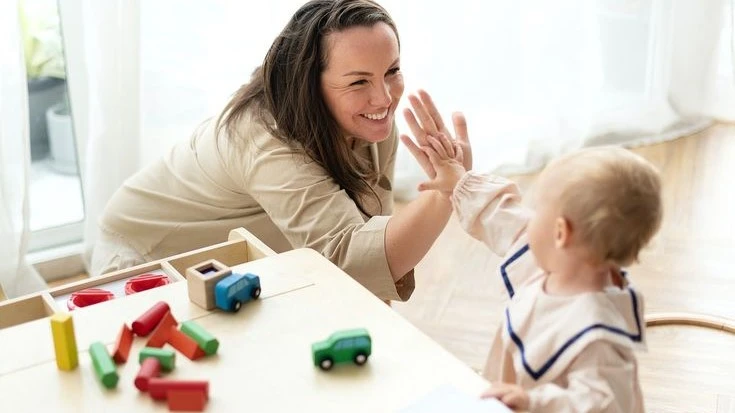Raising a child is a wild ride—equal parts joy and chaos!
As psychologist Dr. John Gottman wisely said, “How parents interact with their children in the first five years of life will shape their emotional patterns for the rest of their lives.” That truth hits home for every parent navigating those early, critical years.
I’ll be honest—parenting has pushed me to my limits. I’ve made empty threats, caved during tantrums, and lost my cool more times than I can count. But every misstep taught me something new about what kids really need from us.
If you’re here for honest, real-world parenting advice on how to raise a well-behaved child that actually works, you’re in the right place. Let’s dive into what makes this journey not just manageable, but truly meaningful.
1. The Foundations of Good Behavior
Good behavior doesn’t happen by accident. Children learn how to act based on what they see, hear, and experience. It’s our job as parents to teach them the right way.

Imagine a toddler who hits another child at the playground. Instead of yelling, a parent who models good behavior might kneel down, explain why hitting is wrong, and show them how to express their frustration with words. This teaches empathy and accountability without fear.
Kids mimic everything we do. If we’re rude, they’ll be rude. If we’re kind and patient, they’ll learn those traits, too.
The best way to encourage good behavior is through positive reinforcement. When kids do the right thing, acknowledge it! Say things like, “I love how you helped your little sister just now.” This makes them want to repeat good behavior because they feel proud of their actions. The more we encourage kindness, patience, and respect, the more natural it becomes for them.
One thing I learned early on? Kids don’t just magically “behave” on their own. They need guidance, structure, and plenty of patience from us.
2. Setting Clear and Consistent Boundaries
Rules and boundaries are essential for raising a well-behaved child. Without them, kids feel lost and uncertain about what is expected of them.
As child development expert Dr. T. Berry Brazelton once said, “Discipline is not about punishing children. It’s about teaching them how to live in the world.”
When children grow up with clear rules, they feel safe, develop self-discipline, and learn responsibility.
Let’s put this into perspective. Imagine you take your child to a restaurant, and they start running around, disturbing other guests. Now, if they’ve been taught at home that mealtime means sitting at the table, they’ll already understand how to behave. Boundaries at home lay the foundation for respectful behavior in public. When kids know what to expect and why, they’re less likely to push limits.

One of the best ways to set boundaries is through consistency. Keep house rules simple and clear, like “Use kind words” or “Put toys away after playing.” Routines help reduce chaos—when kids know that bedtime follows bath time every night, they resist less.
And most importantly, follow through on consequences. If a child refuses to clean up, don’t give in and let them have tablet time anyway. Enforcing rules with love helps children respect limits and grow into responsible individuals.
3. Positive Discipline Techniques That Work
Discipline doesn’t have to mean yelling or harsh punishment. In fact, studies show that children who experience positive discipline develop better self-control and problem-solving skills.
For example, instead of scolding a child for making a mess, involve them in cleaning it up. If they draw on the walls, hand them a sponge and say, “Let’s clean this together.” This teaches responsibility while keeping the lesson constructive. Logical consequences like these help kids connect their actions with outcomes.
Another helpful strategy is using natural consequences. If a child refuses to wear a coat on a chilly day, they will feel cold and learn why coats are important—no arguing needed!
Staying calm and enforcing consequences consistently makes all the difference.
Over time, children learn that their actions have results, helping them become more responsible and thoughtful in their choices. If you’ve been asking yourself, how to raise a child with patience and discipline, focusing on calm and constructive discipline is a great place to start.
4. Encouraging Respect, Kindness, and Empathy
Want to raise a kind child? It all starts with what they see at home. Kids learn kindness not through words but through actions.
Epigenetics tells us that which of the inherited genes expressed depends largely on behaviors and the environment. This means that the way we interact with our children directly impacts their emotional development and social skills.
As Fred Rogers once said, “There are three ways to ultimate success: The first way is to be kind. The second way is to be kind. The third way is to be kind.”
A simple way to start is by teaching good manners early. Saying “please” and “thank you” may seem small, but these words create habits that last a lifetime.

Role-playing different social situations, like sharing a toy or comforting a sad friend, helps kids practice kindness in real life.
Imagine a child who sees their parent holding the door open for someone. Next time, they do the same without being asked. When we model empathy and patience in our daily interactions, kids naturally pick up on it and follow suit. The more they see kindness, the more it becomes part of who they are.
5. Managing Tantrums, Defiance, and Behavioral Challenges
All kids misbehave sometimes. It’s part of growing up! But understanding why they act out can make all the difference.
Studies show that most tantrums stem from basic needs—hunger, tiredness, or overstimulation. Before reacting, pause and ask yourself: What’s really going on here?
Let’s say your child is screaming because they don’t want to leave the park. Instead of shouting back, offer choices: “Do you want to walk to the car or skip like a bunny?” Giving kids some control over small decisions helps reduce power struggles. It also teaches them how to handle frustration in a better way.
Stay calm. When parents get angry, kids mirror that energy. Take a deep breath before responding. Instead of dismissing their feelings, say, “I see you’re upset. Leaving is hard, but we can come back another day.” A little patience goes a long way in teaching emotional regulation!
For more in-depth guidance, check out How to Stop Toddler from Screaming to help create a calmer and more cooperative environment.
6. Strengthening the Parent-Child Relationship
Connection is the foundation of everything. When a child feels loved and valued, they are more likely to listen, cooperate, and develop confidence.
As Dr. Bruce Perry, a child development expert, once said, “Relationships are the agents of change, and the most powerful therapy is human love.”
Want an easy way to strengthen your bond? Spend one-on-one time with your child every day. Even 10 minutes of playing, reading, or chatting can make a huge difference.

For example, taking a short walk together after dinner can create opportunities for meaningful conversations.
Family rituals also help build closeness. Whether it’s a bedtime story, a weekly movie night, or a Sunday pancake breakfast, these traditions give children a sense of stability and belonging. When kids feel connected, they naturally seek guidance from their parents and grow up feeling secure and supported.
7. Teaching Self-Discipline and Responsibility
The ultimate goal? Raising a child who makes good choices even when we’re not around.
As psychologist Carol Dweck says, “The view you adopt for yourself profoundly affects the way you lead your life.”
Teaching kids responsibility and self-discipline helps them grow into confident, independent individuals.
One way to build responsibility is by giving age-appropriate chores. A toddler can put toys away, while an older child can help set the table. These small tasks teach accountability and show kids they’re valuable members of the family. A child who learns to clean up their toys after playtime is more likely to take care of their schoolwork without being reminded.
Another key lesson is delayed gratification. Simple games like “Simon Says” help kids practice patience, while saving up for a special toy teaches them to wait for rewards.
Encouraging problem-solving also makes a big difference. Instead of fixing everything for them, try asking, “What do you think we should do?” This helps kids think critically and develop confidence in their own decision-making.
8. Raising a Confident and Emotionally Intelligent Child
Confidence and emotional intelligence go hand in hand. When children feel secure in themselves, they navigate challenges with resilience and empathy.
One way to build confidence is by allowing children to take small risks. Let them order their own food at a restaurant or speak up in class. When they see they are capable, their self-esteem grows.
Encouraging them to express emotions—both positive and negative—also fosters emotional intelligence. Instead of saying, “Don’t cry,” try, “I see you’re upset. Want to talk about it?”
Praise effort over perfection. When children hear, “I love how hard you worked on that puzzle,” instead of “You’re so smart,” they learn that persistence matters more than instant success. This mindset helps them tackle challenges with a positive attitude and believe in their own abilities. Learning how to raise a child to be confident means giving them opportunities to learn, grow, and develop their strengths.
If you’re looking for more ways to improve your parenting skills and create a nurturing environment, check out How to Be a Better Mom. This guide offers practical advice on strengthening your bond with your child while making parenting more enjoyable.
Conclusion
When you focus on how to raise a child with positive reinforcement, clear boundaries, and emotional support, you give them the best foundation for a happy and successful life.
Every child is unique, and there’s no one-size-fits-all parenting approach. Take what works for your family, adjust as needed, and trust your instincts. The goal isn’t to raise a flawless child, but to help them grow into a kind, responsible, and confident person.
What has worked for you in parenting? Have any lessons or tips to share? Drop them in the comments—I’d love to hear your experiences and learn from your journey!









